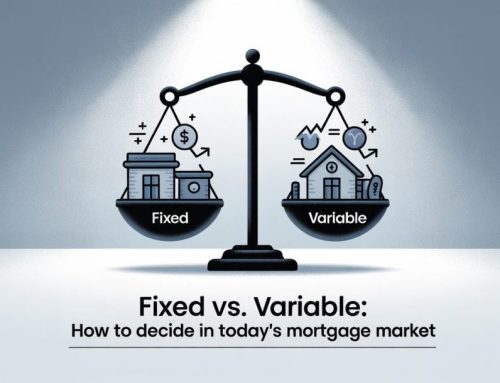It is no big secret that a recession is all but inevitable at this point. The sharp and rapid rate increases from the Bank of Canada in 2022 were far greater than anyone expected. This alone had the R word written all over it. To add fuel to the recessionary fears, the collapse of Silicon Valley Bank pretty much hammered it home. I don’t see how it could be avoided at this point.
While the threat of a recession continues to build, inflation is still the number one priority for the Bank of Canada. They are still confident that they will have it down to 3.00% by the middle of this year, then down to 2.00% by the end of 2024.
Once inflation is under control, their focus will shift to stimulating the economy, which they will do by dropping their rate.
There is no shortage of evidence to support the future rate cuts. They will happen. It’s just a matter of when they start and by what margin.
As a result, most people are now looking for shorter term mortgages. Requests for short term mortgages are now commonplace.
But there is still a lot to consider before making your final decision on term length.
When is The Bank of Canada Expected to Cut Their Rate?
While we know that the BoC will eventually have to cut their rate, there is still a big question mark over when they will start. It is largely believed that it will happen at some point in 2024, with some forecasting cuts in the last quarter of 2023.
Following the collapse for Silicon Valley Bank, predictions were starting to surface that the Bank of Canada could start cutting their rate as early as June 2023.
While that would be nice, it may be wishful thinking.
This also led to bond yields dropping substantially which resulted in some recent large cuts to fixed mortgage rates. But as the dust settles from the SVB news, confidence in the US banking system builds. Bond yields have since rebounded by 11% at the time of writing this blog, thereby relieving the recent downward pressure on fixed rates. Expectations of possible BoC cuts this year are diminishing fast.
Big Bank Forecasts Less Optimistic
Since last fall, three of the big six banks were forecasting that the Bank of Canada would start cutting their rate in the latter half of 2023. But as of this month, two have adjusted their forecasts, pushing out the expectation out to the first quarter of 2023. That’s only a few months, but there is nothing to say that they won’t get pushed out further. Forecasts are always changing.
National Bank is the only remaining bank forecasting a 0.25% cut in the fourth quarter of this year.
Will You Come Out Ahead With a Short Term Rate?
We also need to consider the fact that shorter term mortgages carry higher rates. The shorter the term, the higher the rate.
As rates are expected to fall considerably over the next few years, most people are okay paying a higher rate for a shorter term. The expectation is that they will be able to take advantage of lower rates when their mortgage comes up for renewal, thereby saving them more money long term.
But will you actually come out ahead?
There are three things to consider before making the decision:
- Additional cost at the end of the shorter term
- Break even rate
- Where will rates be at the end of the term
Additional cost
The additional cost is calculated up to the end of the shorter term. For example, if you are comparing a two year term with a three year, it would be calculated until the end of two years.
The additional cost is how much you will be behind after two years. It would then need to be made up with the lower future one year term rate (to match the three year comparison term).
This would be determined by the break even rate.
Break Even Rate
This is where the rate would need to be at the end of the shorter term for you to come out even regardless of which option you choose. To compare apples to apples, the term on the break even rate has to match difference between the two terms we are comparing. For example, if we are comparing a two year fixed with a three year fixed, then the break even rate would be on a one year term.
Two year shorter term rate + one year break even rate = Three year (equal to the longer comparison term).
If the one year rate at the end of two years is lower than the break even rate, then you will have come out ahead by choosing the higher rate, shorter term option. If it’s higher, then you would have been better off going with the lower rate on the longer term to begin with.
Cost Comparison of Shorter Vs. Longer Term Mortgages
Let’s now compare a few different scenarios to determine how they stack up against the three points of consideration listed above. We will use a $750,000 mortgage amortized over 25 years in each case.
Scenario One – 2 year fixed at 5.49% vs. 3 year fixed at 4.79%
Rate difference: 0.70%
Additional cost at end of two years: $10,563
Break even rate: 3.24%
The one year fixed rate would need to be lower than 3.24% at the end of two years to come out ahead with the two year fixed.
Scenario Two – 1 year fixed at 5.99% vs. 3 year fixed at 4.99%
Rate difference: 1.00%
Additional cost at end of one year: $7,440
Break even rate: 4.44%
The two year fixed rate would need to be lower than 4.44% after only one year for you to come out ahead with the significantly higher one year term rate.
Scenario Three – 3 year fixed at 4.79% vs. 4 year fixed at 4.49%
Rate difference: 0.30%
Additional cost at end of three years: $6,850
Break even rate: 3.46%
The one year fixed rate would need to be lower than 3.46% after three years for the three year fixed to have been the winner.
Scenario Four – 3 year fixed at 4.59% vs. 5 year fixed at 4.34%
Rate difference: 0.75%
Additional cost at end of three years: $5,694
Break even rate: 3.89%
The two year fixed rate at the end of three years would need to be lower than 3.89% for the shorter term rate to have been the better choice.
Where Will Rates Be at The End of The Term?
This is where you will need to polish up your crystal ball. Everyone is speculating as to where they think rates will be. While they are expected to come down considerably over the next few years, it’s still uncertain as to when the rates will start to fall and by how much.
It is largely based on the Bank of Canada reaching their inflation goals. If inflation remains sticky, then we can expect to see rates stay higher for longer. The forecast is based on what we know today. It could be completely different six months from now. Anything can happen and there is still a lot of uncertainty moving forward.
Choosing The Right Term Length
1year fixed
The lowest rate on a one year fixed mortgage is currently 5.99%. Given that the current expectation is for rates to start coming down in 2024, you would be taking on a significantly higher rate which will only take you to the time when rates are beginning to fall. The odds of making up the additional cost in this case is quite remote. It’s too big of a premium for too short of a term.
2 year fixed
Even two years may not be enough time. If the expected rate cuts get pushed out further, then your chances of coming out ahead are reduced. You may still win, but you’re placing a lot of confidence in the current economic forecasts. Their track record hasn’t been stellar over the past couple of years.
3 year fixed
Three year terms are what most people are choosing these days. Starting at 4.59%, they have the most attractive combination of lower rate and term length. The term is long enough to allow for any potential delays in rate drops given the amount of uncertainty we’re facing.
At the same time, it’s not too long which reduces the risk of missing out on the expected lower rates to come.
4 year fixed
We’re now starting to see more lenders introduce promos on four year fixed rates. While starting to get a little long given the cuts expected, the rate discount is now large enough over the three year that some are starting to consider taking the chance on the longer term.
5 year fixed
Once the most popular choice in the mortgage industry, five year fixed rate products have been collecting dust on lender’s shelves. The demand is low given that the rates are expected to fall within the next few years. But given that there are now five year fixed rates as low as 4.34% in some cases, the discount compared with the three year fixed is enough for some to start taking the chance.
There are also some people who are particularly worried about the uncertainty around the future of mortgage rates. It’s these borrowers that would rather set a rate now to bring the peace of mind in knowing that their rate and payment is locked in for a longer period.
As I say in my book, the best choice isn’t always the one that saves you the most money. It’s the one that allows you to sleep soundly at night.
Taking a Chance on Higher Short Term Rates
By choosing a shorter term mortgage, you’re essentially betting that rates will be lower at the end of your term.
Let’s take a look at the first scenario explained above. Comparing a two year fixed at 5.49% with a three year fixed at 4.79%.
At the end of two years, you’ll be behind by $10,563. This is the amount that you will need to make up in the next year.
You are essentially betting $10,563 that the one year fixed rate will be lower than the break even rate of 3.24% at the end of two years.
Are you willing to take that bet?
If you are, then the two year fixed rate would be your choice.
If not, then you’re better off going with the three year fixed. It at least guarantees that you’ll save the $10K at the end of the second year. What happens beyond that is unknown.
Conclusion
Shorter term mortgages are now more popular than ever, with the three year fixed products leading the way. There is still a lot of uncertainty moving forward, and anything can happen. The forecasts are based on today’s information. They can and will change as we progress throughout the year. They always do.
The truth is that no one knows where rates will be in a few years. All we know are that they are expected to be considerably lower. But even that is not guaranteed. Nothing is when it comes to the financial world. It all comes down to what you feel most comfortable with.
*The lowest mortgage rates can vary based on a number of different factors. For more information, please check out my blog on Why Different People are Quoted Different Rates








very informative articles or reviews at this time.
Thank you!